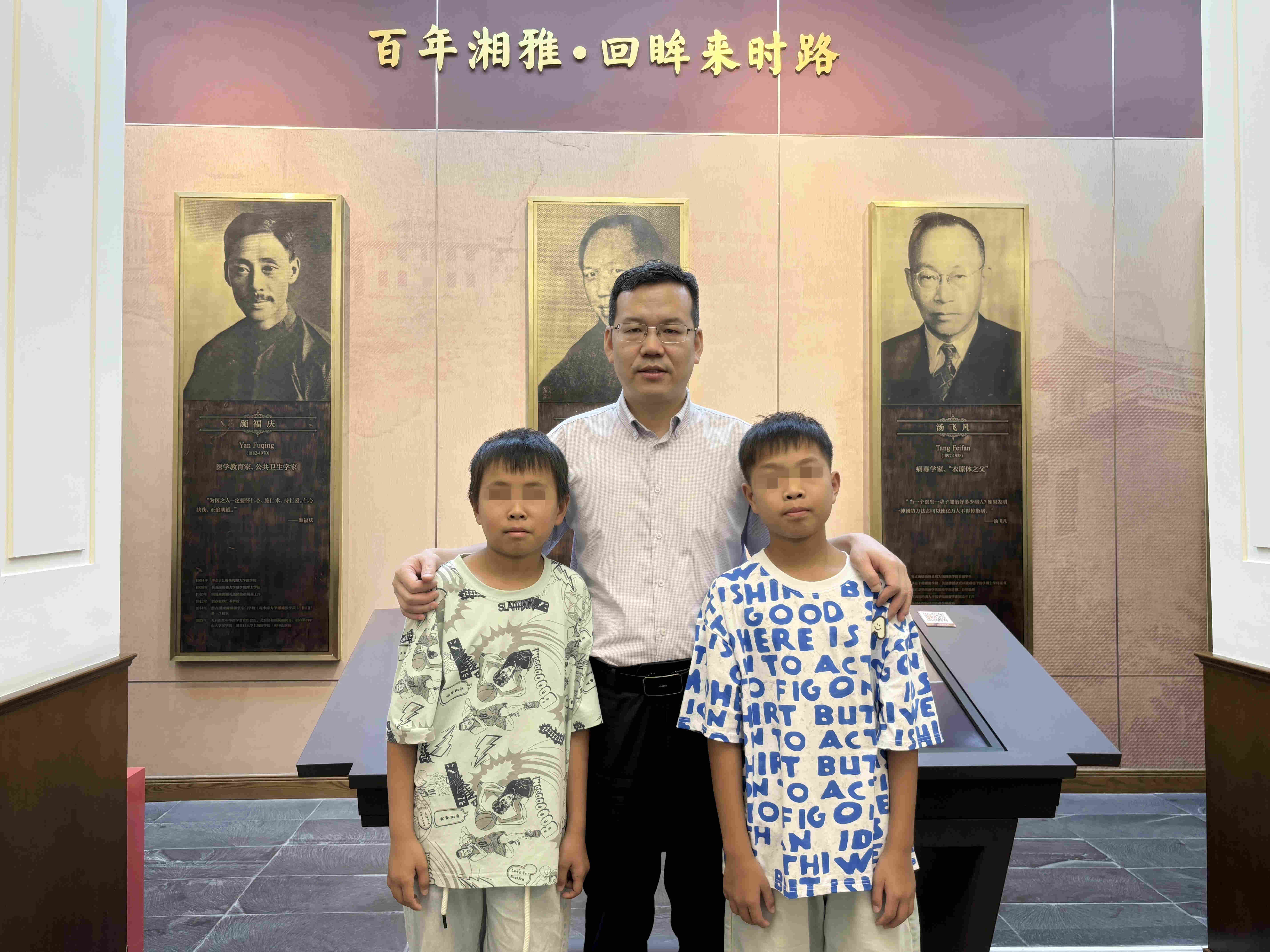

2024-07-30
On July 30, 2024, BRL Medicine Inc. (hereinafter referred to as "BRL Medicine"), which focuses on gene and cell therapy, announced that the world's first CRISPR gene editing treatment for β0/β0 thalassemia patients, in collaboration with Xiangya Hospital of Central South University, has completely eliminated the need for blood transfusions and restored the patients to a healthy life for four years. In April 2020, the patient officially received BRL Medicine's CRISPR gene therapy (pipeline code: BRL-101); in June of the same year, the patient was officially discharged from the hospital, marking the end of the treatment cycle after only 56 days. It is worth mentioning that in August 2022, the world's first clinical research achievement based on CRISPR gene editing for the treatment of severe thalassemia was published in the international top academic journal Nature Medicine.

4th Anniversary Follow-up: Clinical Researcher (PI) Professor Bin Fu from Xiangya Hospital poses with the first "poverty alleviation" subject Xi Xi (pseudonym, right 1) and the thalassemia subject Wang Wang (pseudonym, left 1)
Regaining "New Life" for 4 Years, Reflecting on the Path to "Healing"
This year, XiXi (pseudonym) has turned 11 and is about to enter the sixth grade of elementary school. It has been four years since she received the BRL-101 gene therapy to eliminate her dependence on blood transfusions. The principal investigator (PI) Professor Bin Fu from Xiangya Hospital stated, "Since this is the world's first successful case of treating β0/β0 thalassemia major with CRISPR gene editing technology, looking back at the process of gene therapy for these two children with severe thalassemia not only bears witness to the challenges faced in product technology during the collaboration with BRL Medicine, but also the various policy challenges encountered in the clinical phase; it also bears witness to the successful treatment of both children, achieving a lifelong 'cure'. Furthermore, four years have passed since the gene therapy, and from the follow-up results, both children are doing very well in all aspects, with hemoglobin levels of 142g/L and 132g/L respectively, and other test indicators and ultrasound results are normal. Additionally, compared to last year, the children have grown 5-6 centimeters in height and 4-6 kilograms in weight within a year, both returning to normal growth status. It is gratifying to see that gene editing therapy, now moving towards the clinic, demonstrates excellent safety and efficacy. We look forward to the future launch of the product, which can bring new hope to more thalassemia patients."
In April 2020, Xixi, as the first case of β0/β0 severe thalassemia, officially received CRISPR gene editing treatment (BRL-101); in June 2020, Xixi successfully became independent from blood transfusion dependence, from receiving treatment to officially "lifting out of poverty", the treatment cycle was only 56 days. Four years have passed since then, and Xixi's follow-up health checks have shown that her body is still healthy, with the latest follow-up showing a hemoglobin level of 142g/L. Xixi's father expressed his excitement, "It has been four years since successfully receiving gene therapy, now he is physically and mentally healthy, lively, and cheerful. His favorite sports are playing basketball and swimming. It is really touching to see the child growing taller and stronger day by day. I am very grateful to Professor Fu of Xiangya Hospital and the BRL Medicine team for everything they have done for my child, allowing him to regain a new life. I hope he will repay society in the future, and I also hope that BRL Medicine's gene therapy drugs will be launched early to help more thalassemia families like us."
Gene therapy, making the world free from "poverty"
In December 2023 and January 2024, the world's first CRISPR-based gene editing therapy, CASGEVY™, for the treatment of β-thalassemia (TDT) and sickle cell anemia (SCD), was approved for marketing in Europe and the United States, marking a significant milestone in the history of pharmaceuticals based on CRISPR technology, demonstrating the immense potential of CRISPR development.
The gene therapy product that Xixi received (pipeline code: BRL-101), like CASGEVY™, also utilizes CRISPR gene editing of the BCL11A locus to modify the patient's hematopoietic stem cells. The modified hematopoietic stem cells are then infused back into the patient's body, where they undergo self-renewal and differentiation to rebuild the modified cell population, thus achieving the goal of treating blood system diseases. This offers the advantage of "one-time administration, lifelong cure.".
BRL Medicine's BRL-101 has significant clinical effects and broad prospects
According to the latest data released by BRL Medicine, all 15 patients who received BRL-101 gene therapy were 100% independent of blood transfusions, achieving a lifelong cure with a single treatment! At the same time, the average total hemoglobin of the patients was greater than 120g/L, quickly returning to the level of healthy people, and the therapeutic effect was significantly better than that of internationally marketed products and domestic research products. Moreover, BRL Medicine's BRL-101 product uses electroporation to deliver gene editing materials, avoiding the safety issues caused by random insertion of viral vectors into hematopoietic stem cells. At the same time, the target of gene editing has undergone extensive off-target research, proving that the target has no off-target effect and has high safety.
Overall, compared to other treatment methods, BRL Medicine's BRL-101 gene therapy is more efficient, convenient, and safe. It has advantages such as good targeting, high safety, wide range of action, and significant therapeutic effects, and is expected to become a therapy that benefits the public more. In the future, BRL Medicine will continue to work with clinical experts to fully promote the transformation and implementation of this clinical research, looking forward to benefiting the majority of thalassemia patients and patients with genetic rare diseases at an early date.